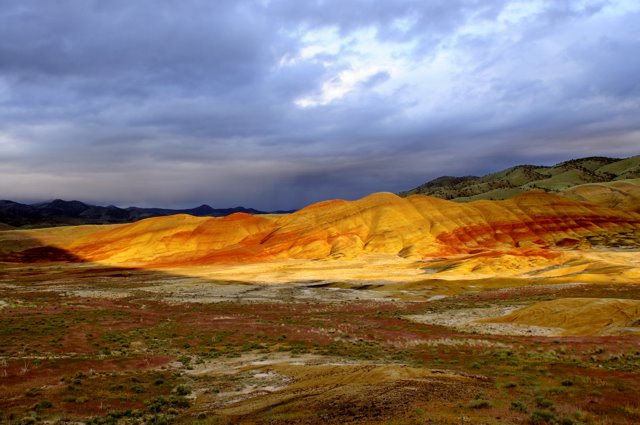Not every camera has a viewfinder that you look through. Some have a monitor or screen on the back that allows you to see what the camera is pointing at. Some cameras such as SLR's have what is called “through the lens technology” which means that a prism in the viewfinder allows you to actual view your scene through the lens. Cameras without viewfinders but with viewing screens do the same thing but display the scene on the cameras monitor.
There can be a lot of information available about the scene you are viewing that is very helpful to you. One of my camera's actually display's 27 different pieces of information in the viewfinder as I look through it. This can include the shutter speed, f/stop, analog exposure meter, battery status indicator, focus point, in focus indicator, and much more. One optional item that most cameras allow you to display is called a “Reference Grid.” Not every camera has this feature but most of them do. Here's how to use it.
Look at your camera's manual and figure out how to turn the reference grid on and off. I usually leave mine turned on. You use this grid to help keep a level horizon in your pictures and to help you position your subjects. Where you position your subject within your frame is virtually everything that photography is all about. Most of your reference grids will look like a tic-tac-toe board either in your viewfinder or on your monitor panel. There will be nine rectangles or squares and your screen will be divided into thirds. The lines help you use the Rule of Thirds as you compose your images which I will write about in my next post. For now just take some pictures while trying to put your main subject either on or near the grid lines or the intersection points. Use the lines to position your landscape horizons too. You'll like the results. Watch for my next post about the “Rule of Thirds.”
Please send comments if this article was helpful to you or if you would like information about other topics.
If you are looking for books about how to use your camera click this Book Store link to see what is available. Need a Camera? This Camera Store has the the best choices available on the internet.
You can also visit my own photography website at Dwains Picks to see some of my work.
Thanks for visiting and I hope you will check this site often.

No comments:
Post a Comment